The exact match domain refers to a domain name that involves phrases with the search demand from the web search engines. An exact match domain can have multiple keywords with search volume in the domain name. Exact match domains involve brandinizing the query for ranking purposes. An exact match domain can rank higher than other branded term domains. Thus, SEOs prefer Exact Match Domains (EMDs) for ranking purposes. Search engines, like Google and Microsoft Bing, made several explanations related to the exact match domains’ functionality and usage purposes.
The Exact Match Domain SEO Case Study key results are below.
- Having 100+ daily clicks on the 7th day of the project.
- Despite there being 10 different brands using the same phrase on the domain name, coming to the first SERP page in one week.
- Breaching 5,000+ organic clicks in the first month.
- Breaching 100,000 impressions in the first month.
- Having 7,000+ organic queries in the first month.
- Ranking for the synonyms of the Exact Match Domain phrase.
- Acquiring 1000+ direct sessions for the brand.
- Indexing 80+ web pages on the 3rd day of the brand launch.
- Reaching out 700 Clicks a day in the 6th month of the project.
- 10,358 Organic Search Queries are acquired.
- 1115 Ranked Queries between 4-10 in 6 months.
- 377 Organic Search Queries are ranked between 1–3 rankings in 6 months with exact matching domains.
- During the project, the total referring domain count was and is lower than 100.
- The Domain Rating Score of Ahrefs is 4.1, while SEMRush’s Authority Score is 23.
- The total Referring Domain is 96, the Backlink count is 453.
- The top-ranking competitor has 5700 Referring Domain, and 8,100,000 backlinks with 7,500,000 monthly search traffic.
- The second top competitor has 49,800 referring domains with 11,800,000 backlinks with 74,000,000 monthly traffic.
- The project had to be ceased due to the pandemic conditions and hyperinflation in Turkey, along with regulations in the used car market.
- The project has proven that exact matching domains bend the query search needs, and change the query context with “navigational query classifications”.
- The project has been outranked when it stops branding, and publishing new content with higher quality, and the project had design and UX issues. But, the outranking project was another exact-matching domain that proves the exact match domains (EMD) search engine optimization value.
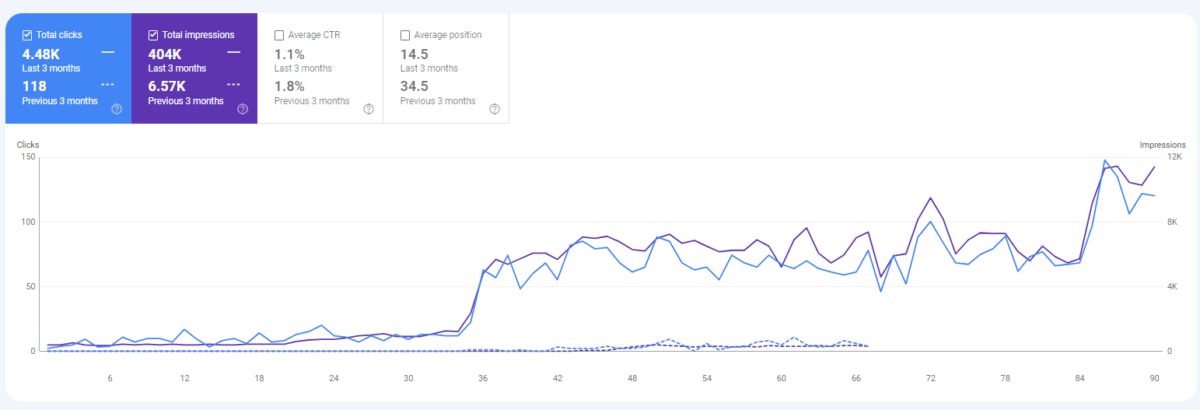

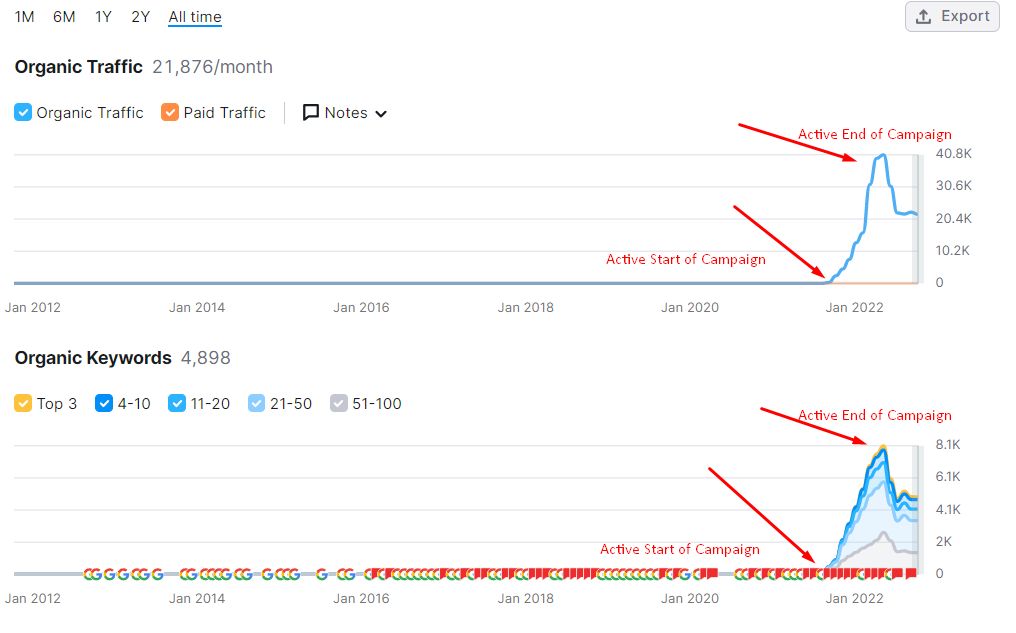

What are the benefits of Exact Match Domains for SEO?
Search Engines use Information Retrieval and Extraction to understand the overall relevancy, quality, accuracy, and responsiveness of a document to a phrase. Exact match domains contain the advantage of being able to rank quicker since they include valuable phrases on their website name. Information Retrieval methodologies find the phrases in different sections of the web page for weighting them differently. These sections are called “zones”. URL and Domain Name sections of the URL are different zones. Having the searched query in the brand name affects the character of the query. Thus, to be able to rank for a competitive term with an Exact Match Domain, the SEO Project has to have brand value. Changing the query processing methods of search engines, and the results of these methods, the data for the brand identity has to be provided.
- The benefits of Exact Match Domains for SEO are listed below.
- Collecting historical data earlier.
- Including the essential relevancy points on the site every moment.
- Brandinization of queries is easier.
- Opening site links on the SERP for more SERP state and SERP-originated navigation is easier.
- The Browsers’ address bar can show directly the EMD while the user searches for the specific query.
- The auto-complete data and suggestions for web search engine users can contain the brand name easier.
- The query search results can contain the web entity parts, such as social media account results.
- The Google Business Profile (GMB) can appear in the competitive search term with brand reviews.
- The Knowledge Graph can contain the “Brand” entity, and a knowledge panel can be triggered.
- The brand name can appear in the related search terms with the same query’s “capital letter” starting version.
- The brand’s video carousels and video results can appear for the search term.
- The brand can appear in the localized search terms faster.
- The news about the brand can trigger Top Stories or “News” SERP Feature.
- The Shopping or Books sections can appear for the competitive terms.
- The Brand’s managers or founders can appear in the specific search term results directly or indirectly.
The benefits of the Exact Match Domains are relevant to Information Retrieval and Extraction, but also it is relevant to the query processing methods of the search engines. An exact match domain affects the query results by changing the query’s nature. Making it from a generic term to a navigational brand term changes the results. Thus, having an exact brand identity is important. That’s why the Knowledge Panel Management and Brand SERP Optimization are relevant to the Exact Match Domains.

From Entity-oriented search to semantic SEO, Exact Match Domain SEO Case Studies create a connection.
Why is Query Processing Relevant to Exact Match Domains?
Query processing is relevant to exact match domains because a search engine understands the relevance of words that appear in the domain name to a query by processing the query. Query processing is the process of rewriting the query by calculating the term weights in the query words. A processed query can provide relevance for the main search intent or the minor search intent. The processed query might include phrases from the specific domain, name, or variations of the specific domain name words. Based on the coverage, or the mutual word occurrence between the processed query variations, and the domain name words, the exact match domain’s success chance varies.

A query processing methodology involves query parsing, query term weight calculation, question generation, query word order changing, query word stemming and lemmatization, and query word clustering. An exact match domain and query processing relevance comes from the Information Retrieval from different zones. A zone is the part of the web page. If the processed query versions include the words from the domain name, or the brand name, the relevance, or the possible search intent satisfactions become higher between the raw query (user’s query) and the website.

To learn more about the query processing methods of semantic search engines, read Koray Tugberk GUBUR’s Semantic Search Engines and Query Processing methods.
Why is Entity-oriented Search Relevant to Exact Match Domain SEO Projects?
Entity-oriented search is relevant to exact match domain SEO Projects because, entity-oriented search engines organize their indexes based on the entities, their attributes, and connections. A brand is an entity type for entity-oriented search engines. A brand entity involves different phrases within its name. Entity-phrase association makes a query relevant to a brand name from another vertical. Matching phrases, and matching entities are two different processes that happen from the same characters.

A search engine can try to match the word embeddings, character embeddings, or the meaning of the word. Embeddings do not vary from word to word while meaning changes tremendously. The same word can have multiple different names with different other words. Thus, a search engine needs to differentiate when the word refers to a brand when it refers to the term. This differentiation process can extract “mentions”, or “inferred links” for the brand. An exact match domain can take the advantage of “being mentioned” by uniting its brand identity with the concept that they are relevant. Besides marketing purposes, matching a brand name with the targeted generic concept benefits the entity-oriented search algorithms to make the brand more relevant to the specific “meaning”.

For the Exact Match Domain SEO Case Study, the car brands, models, fuel types, gears, manufacturers, and other types of car-related attributes are used to satisfy all the possible search intents for the meaning of the phrases that appear in the exact match domain.
What are the uses of Brand SERP and Knowledge Panel Management for EMDs?
Entity-oriented search is relevant to the Brand SERP and Knowledge Panel Management. Brand SERP is optimizing the search engine result page for the brand’s brand name query. Knowledge Panel Management involves the optimization efforts for the information that a knowledge panel involves. A brand name with an exact match domain name involves Brand SERP and Knowledge Panel Management for dominating the character of a SERP. The character of a SERP involves the overall SERP Features, related search terms, search verticals, video carousels, or other types of SERP Features. The success of an EMD and SERP Character are connected to each other. Domination of a SERP instance with the brand-related terms and other entities includes the process of Brand SERP and Knowledge Panel Management.

What are the Disadvantages of Exact Match Domains?
There are two main disadvantages for the exact match domains. These are multiple brands with the same name, and brand identity resolution. The disadvantages of EMDs are listed below, with their examples and explanations.
- Brand Identity Resolution: Brand Identity Resolution involves the differentiation of a brand from another with its own identity. Exact Match Domains cause usage of the same domain name with different domain extensions, such as “example.com” and “example.co”. Thus, it creates a security issue while also creating a brand differentiation effort from the search engine point of view.
- Existing Multiple Brands with Same Name: Existing Multiple Brands with the Same Name makes SEO Efforts harder. Because one brand mention can benefit multiple brands. Search engine users click another brand in the wrong way. And, a search engine can’t rank always all the exact match domains, it would create an “embarrassment” for that. Thus, a search engine has to decrease the value of the “branded search” for the query by limiting an EMD query to one EMD.
- Lackness of Brand Identity Awareness: Lackness of Brand Identity Awareness is a long-term obstacle for an EMD brand. Not having a brand identity can decrease user retention, brand other queries’ search demand, and the brand’s prominence to the search engine. To differentiate a brand from another, using better UX elements, or Trust Elements, logos, mottos, events, newsletters, and omnichannel marketing strategies are necessary.
- Increased Brand Building and Marketing Cost: Brand Identity Awareness, Brand Identity Resolution, and Multiple Brand Name Competitors create an increased marketing cost. Marketing cost involves differentiation, positioning, and brand identity-building processes’ cost. Exact Match Domain SEO Efforts and Brand Building efforts should work together.
What is the Relevance of Information Foraging to Exact Match Domain SEO?
Information Foraging is the process of constructing a list of documents for satisfying any kind of need that comes from queries. Information Foraging and Exact Match Domain SEO are relevant to each other because Exact Match Domain strategies are implemented by multiple other SEO Projects for the same phrase. Thus, a search engine can’t include only the EMDs for the same query. In this context, limiting certain types of results on the SERP for a query is necessary to keep it diverse, and increase the possible click satisfaction. Query Processing and Information Foraging are relevant steps to construct and serve a SERP. Thus, choosing the source types to serve requires different types of indexes for a query. A search engine can collect all the penetrative brands for a query, and can decide only the most relevant brand for serving the “branded query” nature.
What is the Relevance of Exact Match Domains to the Embarrassment Factor of Search Engines?
The embarrassment factor of a search engine involves creating a wrong Search Engine Result Page by not understanding the query of the user. Thus, every search engine tries to rank web pages and answers based on certain types of thresholds. Exact Match Domains are relevant to Embarrassment Factors of Search Engines because a search engine can be manipulated easily by an actual match domain and brand name. To prevent the embarrassment factor prevents the EMD ranking, the EMD SEO Project should give valid external and internal ranking, trust, and relevance signals to the search engine. Since, a search engine doesn’t rank every EMD, or more than 1 EMD for a query, and phrase, being the best candidate in the cluster increases the chance of ranking for EMDs.
Below, Matt Cutts explains the effect of relevant phrases on queries, and how search engines should approach it.
In this context, 99 different bad EMD examples can support only 1 good EMD by attributing their relevance. Because having 99 different brands for a phrase can signal the “phrase’s brand value” and a possible query processing output to understand the query’s brand relevance value. In this context, the nature of the brands, or the occurrence of certain types of candidate documents and sources for a query can affect the query processing methods of search engines. And, a search engine can choose a representative sample for the cluster, and attribute others’ relevance to that one to satisfy a possible search intent from that phrase.
What is the Background of the Exact Match Domain SEO Case Study?
The Exact Match Domain SEO Case Study includes a real-world SEO Project that implements the EMD as an SEO tactic. In this EMD SEO Guide, an exact match domain that has been planned for 2019 is presented. The example EMD SEO Case Study contains results for the “Arabamkacpara.co”. “Arabam Kaç Para” means “How much is my car worth” query in Turkish. The competitors for this competitive query group have millions of backlinks, referring domains, tens of years of historical data, tens of thousands of web pages, and millions of actual search traffic. Despite this competitiveness, with only 80 articles and a simple brand value, the domain has started to get over 100 clicks a day in the first 7 days. Some comparison values are below.

Below, you can see the Google Search Console graphic after the initial launch for the organic performance improvement of exact match domains.

The project launch with the exact match domain has been announced below. The graph is from the first initial week.
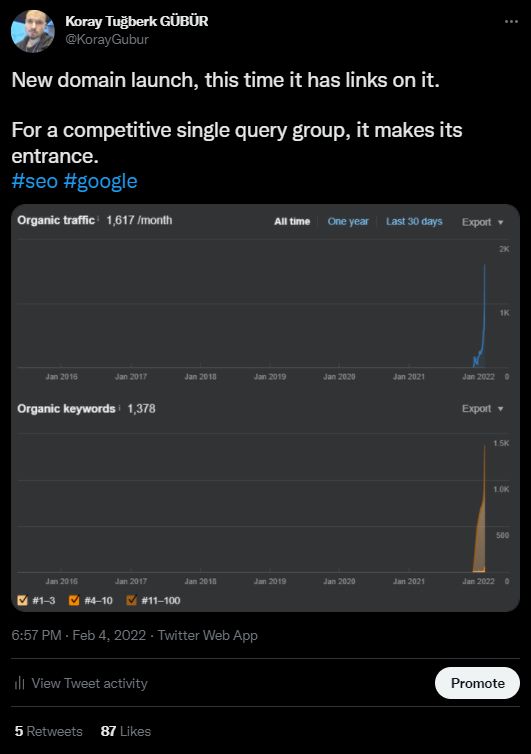
A question and answer related to the article count that has been published and indexation speed are answered below to explain how the exact match domains work with content networks.

Below, you can see a kind of three months comparison before and after the initial launch and the later phase.

Below, you can see the SEMrush results for the “Arabamkacpara.co”.

Below, you can see the results for the Exact Match Domain SEO Case Study from SEMrush.

120 Daily Clicks on the 11th Day of Exact Match Domain SEO Project with a High-Competitive Term
Exact Match Domain SEO Case Study has started to take 120+ Daily Clicks on the 11th Day of the SEO Project Launch. To have these fast results, the things below have been planned and done.
- To decrease the Cost of Retrieval, a cleaner, more understandable, and semantically organized web page layout has been used.
- The custom WordPress theme has been coded and programmed to serve results faster.
- To improve the crawl efficiency, the total link count per web page has been decreased, the internal links are added only if it is contextually relevant.
- The WordPress’ non-SEO Friendly sides such as adding an “a” tag for all the images, and “read more” buttons are removed.
- To create brand value, a LinkedIn Account, Facebook, Instagram, and YouTube Channel have been created, and search engines indexed them.
- The CSS, JS, and other types of resources’ request count is limited.
- The typography has been adjusted to weigh the important sections better.
- A contextually relevant Homepage has been designed, and search intent has been satisfied.
- Synonyms of the exact match domain phrases are used to open similar but new pages. The synonyms are brandinized.
- Structured data is used to define the specific brand’s identity with the exact match domain phrases.
- Internal links, and internal redirects, are cleaned.
- The search parameter URLs are disallowed.
- Log file analysis has been performed to find problematic signals to the search engine.
- Cloudflare and SXG have been activated for a better caching and serving strategy.
- Images are optimized, and all the visual material has been optimized for multiple perspectives.
- Cannibalization problems between the brand name and their synonym web pages have been solved with internal links.
- External references are used to announce the brand’s foundation.
- A corporate “about us”, and an address page has been used to differentiate the brand from others.
To learn some detail about Exact Match Domain SEO efforts and tactics from different SEO Verticals, read the sections that are related to search intent, layout, internal link, technical, local, and semantic SEO.
Optimizing User Interactions and Search intent for a Better Exact Match Domain Performance
Optimizing user interactions for satisfying the search intent for a better exact match domain organic search performance involves modification and improvement of the landing page or homepage for providing engagement and efficient communication with the search engine user.

The search engine users click a search result to satisfy their needs behind the query. The query is the representation of the need of the web search engine user. An exact match domain that doesn’t satisfy the search and visit intent of the web search engine user won’t be able to rank properly. Thus, “links from users”, or “comments of suers” are clear UX Signals for search engines. Tracking users from Chrome Browsers, or Google DNS Addresses, is possible. But, tracking every user for every landing page on the open web is not possible. Since search engines have a limited amount of resources, they have to use different methods to understand the possibility of satisfaction after a click. Sometimes, they can analyze the click and selection behaviors, sometimes they can try to use Page Speed data with CrUX. From time to time, they can track the user from different resources, but it might happen for a limited amount of time for the “Tier 1 Resources”. To understand the Tier 1 Resources, read the Cost Of Retrieval SEO Case Study. Google differentiates its own indexing and crawling tiers based on their prominence. And, for every website, according to its prominence, a different algorithm is triggered for ranking or evaluation of the content of the web entity.

Misleading exact-match domains and mismatching exact-match domains are different from each other. Misleading exact match domains refer to the exact match domains that use brand name phrases irrelevantly, and in a misleading way, while mismatching exact match domains refer to the EMDs that miss the possible search behaviors, and users’ initial-main search intent.
Below, you can see that Exact Match Domain SEO Case Study sample has different web page landing designs.
It uses “arabam kaç para” (how much my car is) and “arabam ne eder” (what does my car worth) phrases as synonyms. The “arabam kaç para” appears in the brand name, “arabam ne eder” appears on the second landing web page. In the structured data and brand about pages, the “arabam ne eder” is stated as the alternative name of the brand. In other words, the multiple recurring synonyms are used for expanding the EMDs’ relevance to the topic and boosting the landing pages’ brand value for the other variations of the brand name.
To provide the best possible user behavior patterns and satisfaction, a “car value calculator” has been designed for the attributes below.
- Car Brand
- Car Model Year
- Car Model
- Car Body Type
- Car Gear
- Car Fuel Type
- Car Damage Situation
All these attributes are filled with possible values from a database, and car values are measured based on the specific sector situation. Thus, using “entity-oriented search” and “web apps” together for EMD success is better. The Cannibalization Problem appeared for both of these web pages. Because, their meanings are too close to each other, another problem is that “Arabam Ne Eder” the second version of the phrase and landing page had the “web app” first. But, the homepage didn’t have it. When we compare the “synonym phrase landing page” and “exact match phrase homepage”, there are 6 main differences between them.
- Homepage targets the canonical query.
- The landing page targets the represented query.
- The landing page has a web app.
- The homepage doesn’t have a web app.
- The landing page has the “homepage phrase” on it.
- The home page doesn’t have the landing page phrase on it.
To understand the “represented query” and “canonical query”, read the Ranking Signal Dilution. Ranking Signal Dilution is the process of diluting the ranking signals by creating conflict between the web pages. The Ranking Signal Dilution SEO Case Study explains the canonical query, representative query, represented query, search intent purposes, and the possible other cannibalization problems. To change the situation of cannibalization, the things below are done.
- Homepage started to link the landing page from the synonym phrase.
- The landing page started to link to the homepage from the canonical phrase.
- The homepage had the web app in an interactive way.
- In the beginning, the web app at the homepage didn’t show functionality, because the development team didn’t put any “interaction triggering signal” on the homepage.
- The click-inciting progressing steps for car attributes and “car value calculation processes” are put on the homepage for improving the interactivity with visitors.
- The content of both web pages is optimized, and the “web page names” are used only once for referring to the other one to prevent ranking signal dilution.
- The homepage and landing page are internally linked and context and phrase consistency for the links are protected.
- The web app is added to the LCP Element on the homepage, with typography changes to provide a better signal to the search engine for the functionality of the web page.
- A guide for car value calculation tool usage and working principles is put on the home page.
After these changes, the cannibalization and ranking signal dilution is solved.

Do Exact Match Domains need a Web App always?
Exact match domains need a web app to provide better functionality. Brand value is not good enough to dominate the brand relevance of the phrase. Thus, landing page interactivity is a must for satisfying the main character of the query. Query character contains the query aspects and definitions for defining the needs behind the query. The query character’s branded query section can be satisfied by the brand value. But, interactivity and engagement are a must for being successful in a proper exact match domain SEO Case study and project.

Internal Link Circulation involves the navigation, and PageRank flow, along with the crawl path organization of the website. The Internal Link optimization for the EMD has two different meanings.
- Showing the most prominent web page for the website.
- Showing the brand homepage for the website.
The most prominent web page of the website needs to process the most central entity, and functionality of the website. And, the homepage already has the most prominent central entity and the functionality for the EMDs. Thus, any internal link, or even an external link, that points to the homepage of the EMD directly benefits both identities of the homepage. In this context, the EMDs have a natural semantic content network and topical map core. Their brand name and their topical focus are the same, and directly feed the relevance of the brand, and functionality of the website to the specific audience, and their search behaviors.

Adding the internal links and fixing some of them were not easy. Because, in this EMD SEO Case Study, the client’s team was not competent. And, eventually adding the internal links are up to my team. Another problem is that I planned this website for 2020, during a meeting with the managers of another industry-leading brand. But, while creating the website in 2022, I couldn’t have a proper team to implement internal link optimization too. Thus, the “Arabamkcapara.co” doesn’t have a proper internal link circulation.

To optimize it, the most important “synonym landing page”, and “EMD Homepage” are prioritized. But, at the same time, there are many URL errors or discordance in the internal link connections. Not having a proper contextual network, and crawl path were one of the early problems for the EMD SEO Case Study. The Top Linked URLs at the top internally align everything with the prominence order of these web pages. And, ranking signal consolidation to solve the possible ranking conflicts is provided for EMD and Synonym phrases at the same time.
Making the synonym phrases with landing pages as “alternate brand name”, and “motto phrases of the brand”, along with giving the functionality with the interactive web app that can satisfy all the possible search intents with an entity-oriented SEO approach is the key for EMDs.

The new visitor and returning visitor comparison can be seen above. It shows that after the first week, some visitors were returning. It is a signal of brand value and satisfaction.

Despite the brand being completely new, social media, and traffic diversification have been implemented as above. Internal link circulation has been supported for providing search behavior diversification too. Thus, the search engine can relate the company and brand with other new concepts.

Importance of Synonym Phrases for the Exact Match Domains
The importance of Synonym Phrases for Exact Match Domains comes from three different aspects.
- Preventing the Ranking Signal Conflict: A synonym landing page might create conflict with the EMD Homepage. Synonym Phrases might not have the EMD advantage, but they can support the relevant other landing pages, including EMD Homepage with “relevance attribution”, and “related search activity” satisfaction.
- Expanding the EMD Advantage with Synonyms: EMD Advantage can be expanded to the synonym phrases by changing the brand name and supporting the brand name with the synonym phrases. Thus, the brand name advantage with brand penetration can be augmented.
- Increasing the Historical Data and Topical Coverage: Choosing the right EMD name supports the synonym names and helps for improving the topical coverage and historical data faster by expanding the relevance radius.

The relevance radius, relevance attribution, and related search activity can be learned from the Importance of Informational Content for SEO. The web pages that improved their performance with the internal link organization and synonym phrase usage can be seen below.

The two popular pages for internal links and centrality, EMD Homepage and Synonym Landing page, are at the top. And, they support the other sub-pages that support back the EMD and Synonym Landing Pages. The support that comes from the sub-pages is provided by the internal links. Since the EMD Homepage ranks, and has internal and external links, recurring visits, direct visits, and “satisfied query sessions”, this trust and usability, or, “link value proposition” is reflected on the sub-pages as relevancy and quality. “The link value proposition” is explained in the Importance of Prestige in News SEO.
A Comparison of Two Different Exact Match Domains’ Performance for the Same Phrase
When I designed the “arabamkacpara.co” in 2020, with a presentation to the clients, there were other brands that use the same exact match phrase. To prevent exact match phrase conflict between the brands, a brand has to determine a brand value threshold for itself. Thus, there are more than 10 different brands that use the phrase “arabamkacpara”, but only one of them was able to come to the first page in the first week of the project.
Which questions a search engine can consider to compare and test exact match domains for ranking?
As a comparison point, I have chosen “arabamkacpara.net” to “arabamkacpara.co”. Some questions a search engine can ask to understand which one of these resources is more prominent are below.
- What would you do if you were a search engine?
- Are these two websites about the same thing?
- Are these two websites from the same brand?
- Are these two websites relevant to the same phrase?
- Is it “araba-m-ka-c-p-a-ra”, or is it “arab-a-k-acpara”, or “arabam kac para”?
- The brand name might be different even if the letters are the same.
- Do they use the same logo?
- Do they have the same typography?
- Do they have the same IP Address?
- Do they have the same hosting provider?
- Do they have the same analytics ID?
- Are they registered into the same GSC account?
- Do the same Gmail accounts visit these websites?
- Do they take visits from the same Internet Service Providers and regions?
- Do they use the same JS, and CSS files?
- Do they use the same layout, and margins, paddings?
- Are their CSS Class names the same?
- Are these brands permanent?
- Should I rank both of them for the same web page?
- Would it be embarrassing for a search engine?
- Would users like it?
- Should I choose only one of them as a representative?
- Should I transfer one of them as authority support to another one?
- Should a search engine rank every exact match domain if these two are successful?
- Should a search engine rank exact match domains only for car-related queries?
- Should a search engine rank every exact match domain only for this language?
- Does it worth all these costly questions?
- Is there a possibility that one of these is really a brand?
- Does anyone search for these brands?
- What should I do for every two brands that have the same name?
- Do they have the same CEO?
- Are the same names on LinkedIn appear on the same brands?
- Do they have any news mentions?
- Do they have any links from news sources?
- Do third-party independent sources mention them?
- Should I add both of them to the Knowledge Graph?
- Should I trigger two different knowledge panels for both of them?
- Should I rank both of their logos on image search?
- Do they sell something?
- Do they accept members?
- Do they have some social media accounts?
- Do they have a real-world address?
- Do they have foot traffic?
- Are their CEOs really experts on these topics?
- How do other search engines rank these sources?
- When they are linked the first time?
- When they are registered for the first time?
- Do they have a company SSL?
- Do they have a real-world entity reference from a legal department or directory?
- Do they have a voice, a face that can be annotated with them?
- Which one of these brands has more authentic content?
- Which one of these brands has satisfied queries better?
- Can they be better than others at these queries?
- Are there any returning visitors?
- Do they have navigational queries?
- Are their domain extensions good enough to differentiate them?
- Is domain extension part of their identity?
- Do these brands with the same name and target an exact match query with their domain names incite others to do the same? Should I just increase the relevance and quality threshold for them?
Below, you will see the organic traffic increase of the Exact Match Domain SEO Case Study traffic increase as below.

Below, you can find their referring domain, and other types of link graph metrics to understand their authenticity and reality for the open web.

The referring web page gaining and loss comparison can be seen below.


The arabamkacpara.co and arabamkcapara.net organic traffic increased. Another, the interesting thing here is that most of the “arabamkacpara.net” articles are not indexed, but after the “arabamkacpara.co” has been started to rank, Google started to index a few more web pages from “arabamkacpara.net”. It shows that different brands from the same relevance or same cluster can support each other, or trigger some temporary re-ranking effects.

The SEMrush shows the efficiency of the semantic content networks, mentions, external references, and creating a brand value for the exact match domains. In 2020, when I performed a specific presentation for the Arabamkacpara.co, I calculated the link per web page externally, or internally. I even measured and stated the total content count needed. And, “arabamkacpara.net” was one of the filed Exact Match Domain SEO Projects that I have shown as an example. In this context, after 2 years, seeing from the first week that, the design, and strategy that is created showed its effect in the first month is a valuable SEO Experience and vision for EMD.

You can see the keyword profiles and their overlapping situation for both the companies and the brands.

You can see that when I launch arabamkacpara.co in 2022, from a plan and numeric value necessities from 2020, a failed EMD sample, arabamkacpara.net also increases its traffic. It is a signal that search engines rank sources together based on their quality and relevance to other sources. In this context, it should be learned that some mentions and brand values that I have created might be shared with the second website candidate with the same brand name. This temporary re-ranking might happen due to this situation.

Even if the specific second failed website has been indexed, many other web pages are actually deindexed and stay like that.
- Key points for Comparing the Multiple Exact Match Domains to Each Other
- Exact Match Domains can share multiple different brands with different character orders and sections.
- Exact Match Domains can share some brand identity and brand mentions.
- Exact Match Domains’ success can affect each other.
- One Exact Match Domain can transfer its authority and link value proposition to another after a certain amount of time.
- Search engines hesitate to rank EMDs due to their overall usage purpose.
- An EMD has to behave as a brand to be able to complete.
- An EMD has to beat other EMDs for the same phrase before ranking on the SERP properly.
- The mention, link, content, and branding numeric needs can be measured and calculated based on the failed EMD samples from the past.
Technical SEO Improvements for Exact Match Domain SEO
Technical SEO Improvements for the Exact Match Domains are prominent for decreasing the cost of retrieval while improving the content value overall. Some Technical SEO Improvements that have been done for the Exact Match Domain SEO are below.
- Cleaning the Internal Redirects
- Cleaning the Internal 404 URLs
- Solving the Server Response Errors
- Improving the Request Count, and Size for Better Page Speed
- Optimizing the Image Pixels for Better Compression
- Implementing a Proper Robots.txt Crawling Strategy
- Using a Proper HTML Tag Order with the SEO-Related Tags
- Implementing Consistent Twitter Card and Open Graph Tags with Canonicalization
- Creation of Clear Indexation and Crawling Scheme and Signals
- Cleaning the 404s Resources from the Source Code
- Using a Lean HTML Header and Footer
- Decreasing the used Color Count
- Decreasing the Total Internal Link Count per Webpage
Local SEO Improvements for Exact Match Domain SEO
Local SEO for exact match domains is useful to provide local relevance between the brand itself and the local. Exact match domains might contain the local names within them for localized search queries. Google Business Profiles and Local SEO-related efforts use the “exact match phrases” for local relevance. Google has a “surprisingness score” to measure the spam probability of a business name being related to a local. For example, a brand that ranks for the query “Manhattan Hotel” shouldn’t be actually a “pizza store”. If the brand itself is a pizza store, but the name says it is a hotel, it means that the brand name is misleading, and distracting the user from the real search query purpose. At the same time, these types of possible misleading brand names create embarrassment for search engines.

Google has a patent to measure the surprisingness score. There is an example above to explain the surprisingness score, and how it functions. The patent “Systems and methods of detecting keyword-stuffed business titles” from Barış Yüksel, and Lev Ratinov try to understand which brand name is authentic and which is not. Thus, the “brand identity” and “search phrase” distinction is necessary. In this context, it should be understood that exact match domains and exact match brand names are relevant, close but not the same. Exact match brand names can force a search engine to create new metrics and algorithms to find some bad samples like “surprisingness score”.
To provide better local search productivity and optimization while supporting the web search performance, an exact match domain shouldn’t trigger a high level of spammy surprisingness score. Thus, an exact match domain name should be chosen carefully, and the brand name shouldn’t exploit the local relevance by forcing a search engine to focus on the embarrassment factor.
In the exact match domain SEO Case Study website, the “Google Business Profile” application has been done, but due to the pandemic conditions, Google didn’t send the approval. In this context, to provide better local relatedness, the address, and the brand identity have been defined in the business directories, and about page.
The exact match domain case study website and the brand have been registered in more than 50 global and local business directories. These directories include the brand identity, purpose, address, and other web entity points such as social media accounts with consistency. The address of the brand is kept unique to differentiate it from other EMDs that target the same phrase.
Semantic SEO Improvements for Exact Match Domain SEO
Semantic SEO has been implemented for the exact match domain SEO Case Study. A topical map and semantic content network have been created and configured to create a topical authority and support the brand value with brand relevance to the topic. Audience relevance, topic relevance, and local relevance for the specifically targeted query terms must be acquired for better rankings. Exact match domains provide these relevance types with their brand name advantage, but to support it properly, a non-branded connection should be provided to support the overall rankings.
In the exact match domain SEO, the topical authority and semantic SEO should be done for the main concept of the website. The central entity in the brand name and central entity in the semantic content network should align everything with a high level of context consolidation. Semantic SEO is implemented for the Exact Match Domains to have better topical coverage, and satisfy the targeted audience’s search behaviors better. Evergreen informational content, seasonal product search queries, along with constantly demanded product queries, all can be covered with semantics. From e-commerce Exact Match Domains to the aggregator, or affiliate exact match domains, Semantic SEO is part of EMD SEO.
In the Exact Match Domain SEO Case Study, semantic SEO has been implemented to cover the related queries, concepts, and topics, and satisfy the related, and possible search behaviors.
How to Create Brand Value for Exact Match Domains?
Brand Value for Exact Match Domains means that the specific source has the main identity rights of the phrase for that specific SERP. Search engines register or record the same phrase for different meanings and entities. If the brand value is not over the threshold for being associated with the specific exact match domain phrase, the branding value of the query can’t be used for ranking and SEO purposes. The methods and practices below can be implemented to provide the brand value for exact match domains.
- Brand Search Demand: Creating Brand Search Demand creates prominence for the specific brand. A diversified user profile with real selections for the brand from SERP, and diversified traffic sources can increase the brand’s search demand and value.
- Positive Query Logs
- External Link References
- External Mention References
- Brand Entity Accounts from Socials
- Entity-phrase Association
- Topical Authority
The topical authority, brand search demand, or other success factors for the EMD SEO Projects vary based on the query competitiveness and the nature. An informational phrase can require topical authority more, and a social engagement query can require social media accounts, and video content more. Thus, the phrase’s meaning and query’s characteristics should be understood, and optimized for the success of the EMD while competing against the same phrase EMDs.

Why does a Search Engine Spokesperson Say that Exact Match Domains don’t work?
Search engine spokespeople usually say that exact match domains do not work. And, saying that “exact match domains” usually do not work is more accurate. Because, there are millions of exact-match domains, and 99% of them do not appear on the first page. The exact match domains SEO Success is not guaranteed, thus the “brand value” and “brand identity” along with the “topical authority” are necessary. Search engine spokespeople say that exact match domains do not guarantee the success of the project to protect the quality of the SERP, and redirect the webmasters to the actual beneficial SEO and UX practices for the web search engine users. The list of reasons for the search engine spokespeople’s explanations for the EMDs is below.
- Protecting web search engine users: A search engine spokesperson can try to protect the web search engine users from the exact match domain exploiting efforts.
- Redirecting webmasters to beneficial and productive SEO efforts: A Search Engine spokesperson can try to redirect an n SEO and webmaster to more beneficial SEO Efforts such as technical SEO, or Semantic SEO.
- Being Honest for most cases of Exact Match Domains’ SEO Projects: Most of the time Exact Match domains fail, thus a search engine spokesperson can tell that EMDs do not work. And, when they work, the actual benefit comes from the quality of content, and brand value.
- Protecting the Web Search Engine: A search engine spokespeople’s main job is to protect the search engine. Thus, search engine spokespeople can tell EMDs do not work for protecting the brand that they represent.
- Decreasing the Spam Efforts: A search engine spokesperson can try to decrease webspam efforts by redirecting webmasters to the other SEO verticals and methods.
- Being Tired to Explain: The mood of a search engine spokesperson can affect his/her explanation. Thus, a Search Engine spokesperson can make a short explanation by simply saying no rather than explaining every detail, and possibility.

Is Using Exact Match Domains Web Spam?
No, using exact match domains is not webspam, or not against the webmaster quality guidelines of Google, or Microsoft Bing. Web Spam involves the black hat SEO technique to perform a Search Engine optimization effort. Exact Match Domains involve the effort of choosing a domain name for ranking faster, but it doesn’t work without a proper brand identity or value.

Thus, it is not misleading the search engines or the users. But, using a misleading domain name might be spammy activity. Exact match domains and misleading domain names are not the same things. For example, the phrase “cheap shoes” phrase can be a brand name, and the domain name, might be seen as relevant to the exact match domains, but if the domain name doesn’t include any shoes or price information within it, it might be seen as misleading.

How Does Microsoft Bing React to Exact Match Domains?
Microsoft Bing usually removes the exact match domains from the SERP to protect its own crawling and indexing resources. Microsoft Bing has removed the Exact Match Domain SEO Case Study website from the SERP completely. But, this might be a result of “an excessive amount of usage” for the Microsoft Bing IndexNow Protocol.
To understand Microsoft Bing’s Indexnow Protocol, read the related test page annals. During the indexation and creation of Arabamkacpara. co-project, I used it within the Search Engine Journal article that I have written. It is about “Python and IndexNow Protocol Usage”. Since I have used the IndexNow Protocol too much, the website might be seen as a spammy source. But, this situation didn’t happen for the other sources that I have tested for IndexNow. In this context, the problem here is the approach of Microsoft Bing to the Exact Match Domains. When it comes to content or domain-related spam efforts, Microsoft Bing is more ruthless than Google. Google does not penalize duplicate content or EMD, but demotes it. Microsoft Bing removes these types of sources directly from its own served index. Below, you can see an example from Microsoft Bing for “arabamkacpara.net”.

It contains three example web pages, but the pagination numbers are wrong, and it comes back to the first web page again when they are clicked. And, this is another example from Microsoft Bing, for the “arabamkacpara.co”.

Some of the performance data from Microsoft Bing for the exact match domain SEO case study project is below.

As you see there is a gradual removal from Microsoft Bing despite all content being unique, and helpful. Another situation here might be for the intensity of link acquisition, but still, it wouldn’t be too quick a reflex from a search engine. Since I have tested Google and Microsoft Bing search engines all the time, I know that Microsoft Bing fights against duplicate content, link spam, link schemes, or content farms with human support and machine learning. Microsoft Bing removes exact match domains from its SERP even if the content is unique. And, this removal might happen faster if there are some other samples with the same exact match domain with a failure, IndexNow API, or link-related intense requests and growth.
Below you can see the SEJ Article that I have written and show the example of Arabamkacpara.co.

As you see, Microsoft Bing indexes these documents earlier thanks to IndexNow, but if there are some other factors, it won’t take too much time to remove them from the served index.
Misleading Exact Match Domains and Ranking Algorithms
Misleading exact-match domains contain domain names without reality or any kind of relevance. A relevant phrase to a query as a domain name can make search engines rank a specific document from the source based on the specific domain name, but if the domain doesn’t reflect any proper relevance or consistency for the specific phrase, it can be misleading. For example, a domain called “canadaicecream”, might not include any kind of ice cream. Lots of parked domains change their identity or their content and business model over time. Thus, misleading phrases for the business functionality can make a search engine more cautious about the brand name perception.
The “How does Google Rank” algorithm examination article focus on initial ranking and re-ranking algorithms in a detailed way. Google, and other search engines, can use two phases for ranking purposes. SEOs focus on the crawling and indexing phases, but not the ranking phases, which is a mistake. Initial Ranking and Re-ranking are the two different phases of the ranking processes. Re-ranking is the process of making the processed document rank again for a better information foraging output.

Misleading exact match domains might not be seen for the first indexing and ranking phase, but after processing the text on the documents, the search engine might decide that even if the brand name is relevant, the brand is not. Thus, brand quality and relevance are more important than the brand’s name’s phrases’ relevance to a query.
Do Domain Extensions affect the Exact Match Domains’ Success for SEO?
Yes, domain extensions affect the success of the exact match domains. Google and other search engine spokesperson say that they do not differentiate the domain extensions, but there are cases that contextual domain extensions help to gain certain types of queries faster. For example, an extension like “.cars”, or, “.guide” might help a search engine to understand the website’s topicality, category, and purpose faster.

Knowing a website, and brand take time. And, contextual search engines always welcome more data for understanding the web. If a source uses the “guide” extension, and if the phrase “guide” appears in the brand name, and in many documents’ titles, the search engine might create relevance from the brand name, to the topics on the website to the domain extension. Site-wide Ngrams, brand mottos, brand colors, or branded queries should align with each other to show the categorical quality and relevance of the domain further.

Domain extensions reflect the brand name and the brand’s canonical. Google works on the websites as it finds them. If many websites use specific brand names by uniting them with their domain extensions, to understand that the specific web entity uses the specific website as an official, Google will need to consider the domain extension as a candidate part of the domain identity, and topicality.
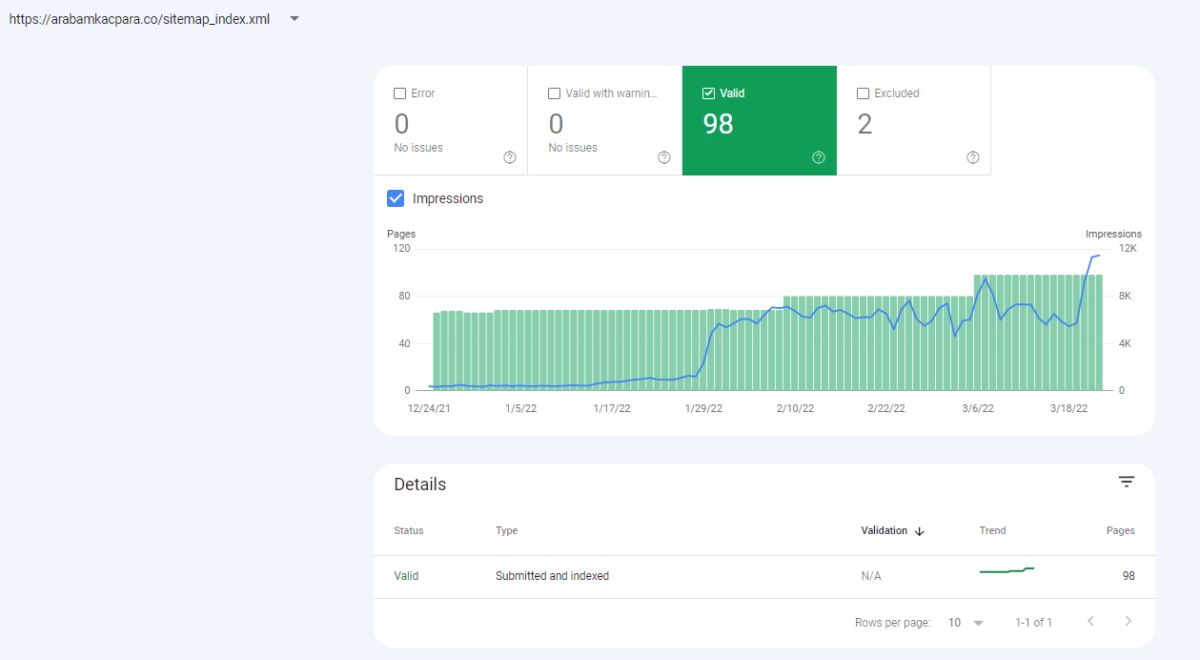
Understanding the overall topic of a domain requires a high amount of data consistency over a long time. And, to rank quality new sources faster, a search engine needs to check time zones, locality signals, and the true identity of the brand. In the Multilingual SEO Case Study, the ccTLD domain extensions are processed among the country-level IP Addresses effects to explain this matter.
Do Exact Match Domains create faster Topical Authority?
Yes, exact match domains help in gaining more historical data earlier. Thus, the ranking speed of the documents from the exact match domains helps gain Topical Authority faster. Topical Authority is the unification of historical data and topical coverage. Query logs can contain the EMD earlier, thus the domain can be re-ranked faster for certain other queries.

Do Exact Match Domains align with Semantic Content Networks?
Yes, Exact Match Domains align with Semantic SEO and Semantic Content Networks. Semantic Content Networks create a Semantic Network with the form of content. Thus, having the most important concept and the term at the center of the semantic content network helps for ranking other documents faster.

And, every sub-query has a brand name advantage to boost the rankings further. Making all the sub-queries brandinized, and taking the central entities to the domain name helps for boosting overall rankings for a semantic content network. If a brand name provides a natural topical relevance, the Information Retrieval and possible categorical quality always become naturally higher.

Does Exact Match Domains help for the generation of site-wide Ngrams on Google Side?
Yes, exact match domains help for the generation of site-wide ngrams. Site-wide grams are the n-grams that appear on every web page of the source. Site-wide ngrams help search engines locate the main topic and macro context of the source. A domain name that refers to a topic, or an entity, helps a search engine to refer to possible context vectors to rank the source. For example, for the domain “shoes.com”, the “Gender + shoes” and other types of context vectors and query templates can be generated easily. Thus, a search engine can consider the specific source as a quality and relevant candidate faster.

Do Exact Match Domains help for Indexation?
Indexation speed and efficiency are relevant to the two main factors, the technical crawl efficiency of the source, and the overall cost of retrieval. The cost of retrieval is the overall cost that the source creates despite the quality and value of the content and function that it provides and serves. Exact Match Domains can help by providing earlier topical relevance and faster indexation with a brand value, but if the overall crawl efficiency is not good, it means that the crawl delay will increase while the search engine evaluates the source later than it should.
The SEO Case Study of Cost of Retrieval explains the indexation and quality, relevance balance from the search engine’s point of view.

How do Exact Matching Domains Compete Against Each Other?
The exact matching domains compete against each other for higher SEO performance with the same search principles, such as branding the search terms and changing the generic informative or actionable queries to navigational queries. Generic informative queries are answer-seeking queries that target an attribute value of a specific entity, or the identity of an entity directly.
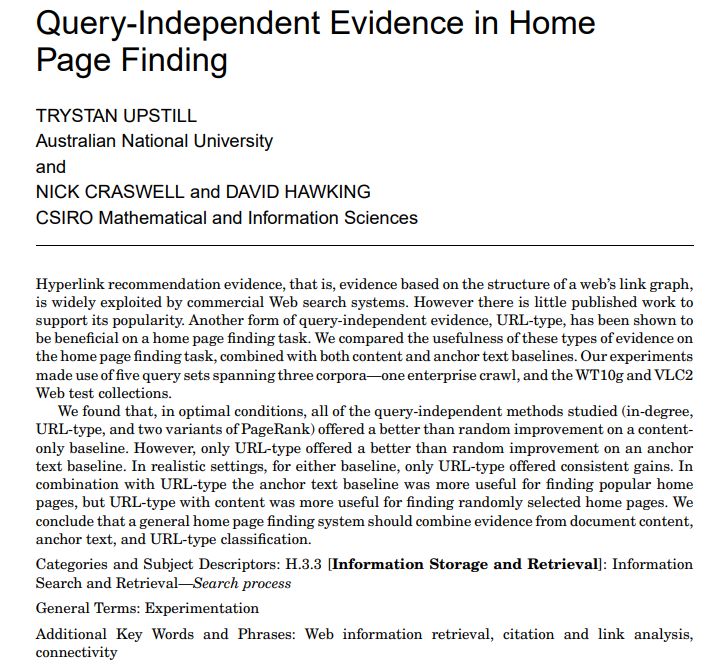
The actionable queries are not for learning, but it is for performing a process such as “calculation”, or “comparison”. The exact match-domain example of the EMD SEO Case Study focuses on answer-seeking queries and actionable queries by branding them. Thus, the query interpretations and aspects should be turned into more navigation nature as much as possible. The exact-matching domains compete and outrank each other by being closer to the query context from every angle, and branding the query search terms.
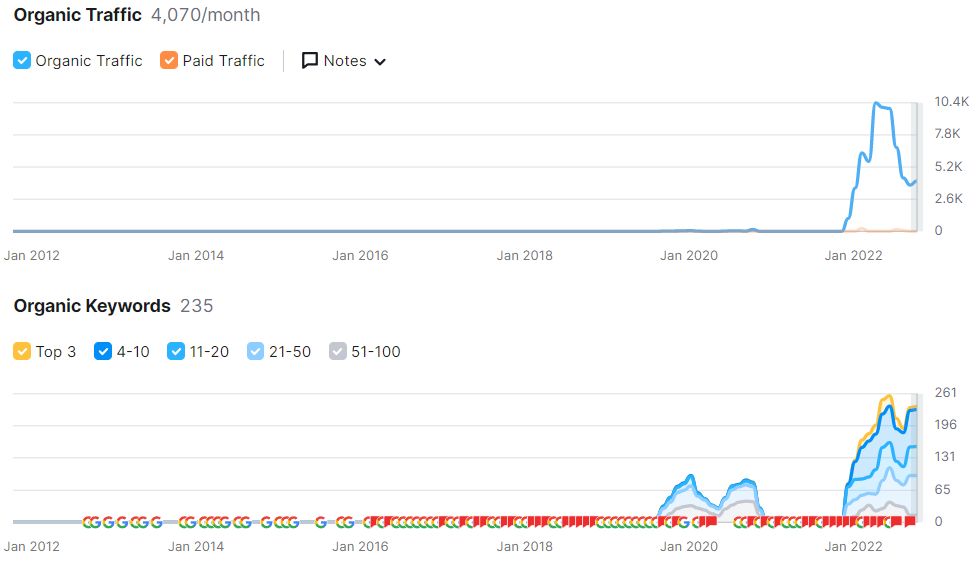
The example of exact match domain SEO case study and campaign have samples of multiple exact-matching-domain competitions. The search engines need to balance the exact-matching domain and non-exact-matching domain existence on the SERP. Thus, Google and other web search engines made it harder to rank for exact-matching domains by increasing the threshold of association with the query from an identity point of view. The threshold of query and brand association for decreasing the EMD uses among website publishers created a belief for SEOs and marketers that actually search engines don’t let that EMDs rank. But, in certain situations such as having enough level of relevance, satisfaction for clicks, and organic search behaviors, PageRank with historical data help for exceeding the association threshold for query from context, and brand identity verticals.

- Thus, ranking an exact matching domain for a query makes it harder to rank for a second exact matching domain.
- Because, there are multiple obstacles here to understanding whether the EMDs belong to the same brand, whether they are different brands, and whether the domain extensions signal a different brand name, or not.
- Annotation texts around the anchor texts, external references, social media accounts, search behaviors, design differences, color palettes, and click satisfaction scores in query log sessions affect and help to determine which EMDs should exceed the threshold for the association for the query.
- Thus, the “Arabamkacpara.co” and “Arabamkacpara.net” compete against each other, and thanks to overall topical relevance and authority along with the PageRank increase, and brand signals both of the EMds rank successfully.
- Lastly, “List-wise relevance algorithms” might help EMDs to rank higher if one of the EMDs is successful, the search engine might rank the EMDs’ social media accounts, or its other similar examples by assuming it is related to the brand, or it will be satisfying in the same way.
- The point-wise, list-wise, and pair-wise relevance algorithms are different relevance calculation algorithms for Information Retrieval systems.

The “.co” extension EMD metrics from SEMrush and Ahrefs are below.
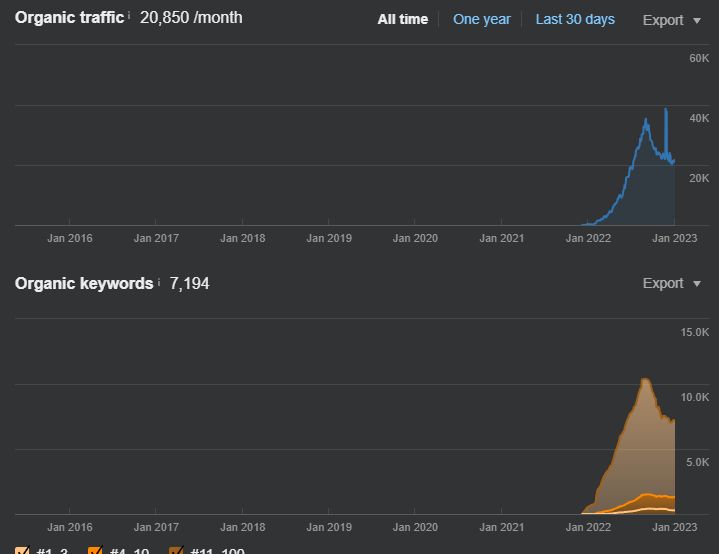
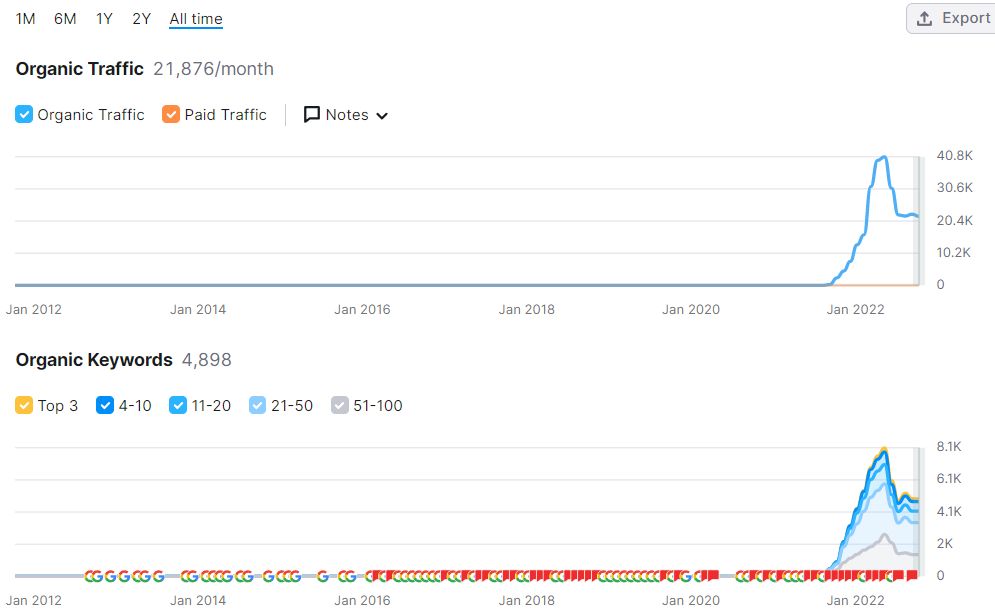
Both of the EMds show similar search graphics because both of them stopped being active after performing a certain amount of success. Google uses “pair-wise” relevance algorithms and document clustering for re-ranking calculations, with lower costs and faster speed. Because, having relevance calculation and overall quality scores for one of the domains helps to assign it to another closely related one, and this correlation creates similar search performance metrics and changes over time. The only good difference between “.co” and “.net” EMds is that one of them focuses on “synonyms of the specific” exact-matching query term, while the second EMD has a narrow focus on the specific query only. This creates a topical profile difference between the two EMDs which help search engine balance the EMD existence on the SERP. To compete against an Exact Matching Domain with another Exact Matching Domain, the website update of the Google, and synonym terms, along with asymmetric topical maps between EMDs should be used to exceed association thresholds for query relevance and context from generic informative, actionable, and branding verticals.
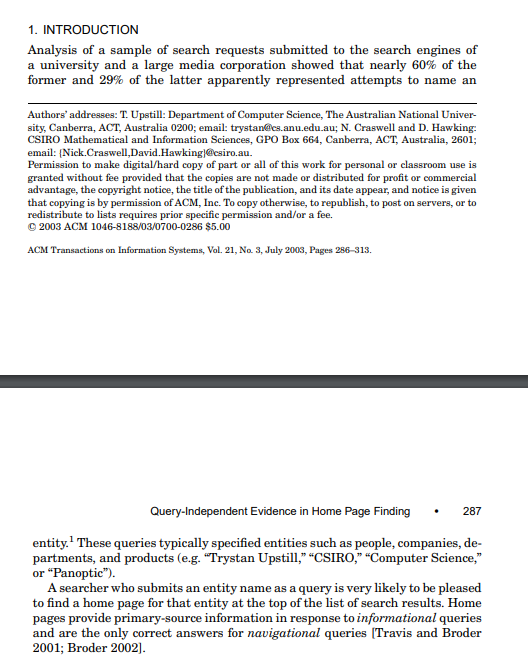
Last Thoughts on Exact Match Domains and Holistic SEO
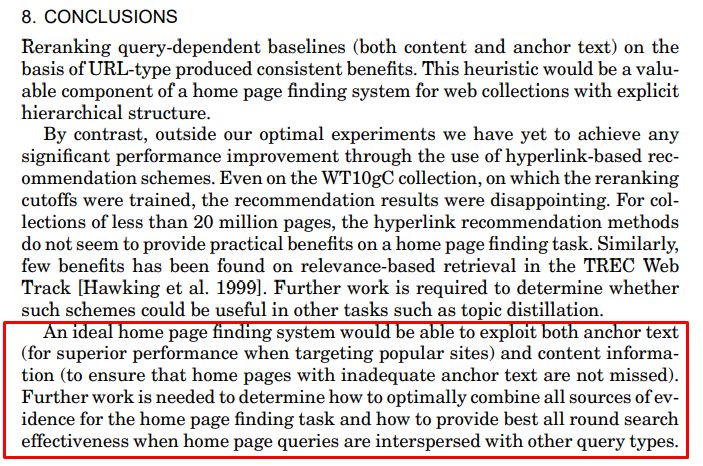
Exact Match Domains are the domains with specific phrases to take the advantage of the Information Retrieval Zones. Exact Match Domains are used successfully and unsuccessfully by different SEO Project managers for SEO ranking purposes. Search engines have different algorithmic methods to differentiate a non-quality exact match domain from a quality and justified exact match domain. Holistic SEO is the process of optimizing an SEO Project from every angle and vertical. Exact Match Domains and Holistic SEO are connected to each other since Holistic SEO contains every angle of the SEO. In this Exact Match Domain SEO tutorial and case study, practical samples, theoretical explanations, and complementary concepts are explained.
In light of the new information, the Exact Match Domain SEO tutorial and case study will be updated.
- Sliding Window - August 12, 2024
- B2P Marketing: How it Works, Benefits, and Strategies - April 26, 2024
- SEO for Casino Websites: A SEO Case Study for the Bet and Gamble Industry - February 5, 2024
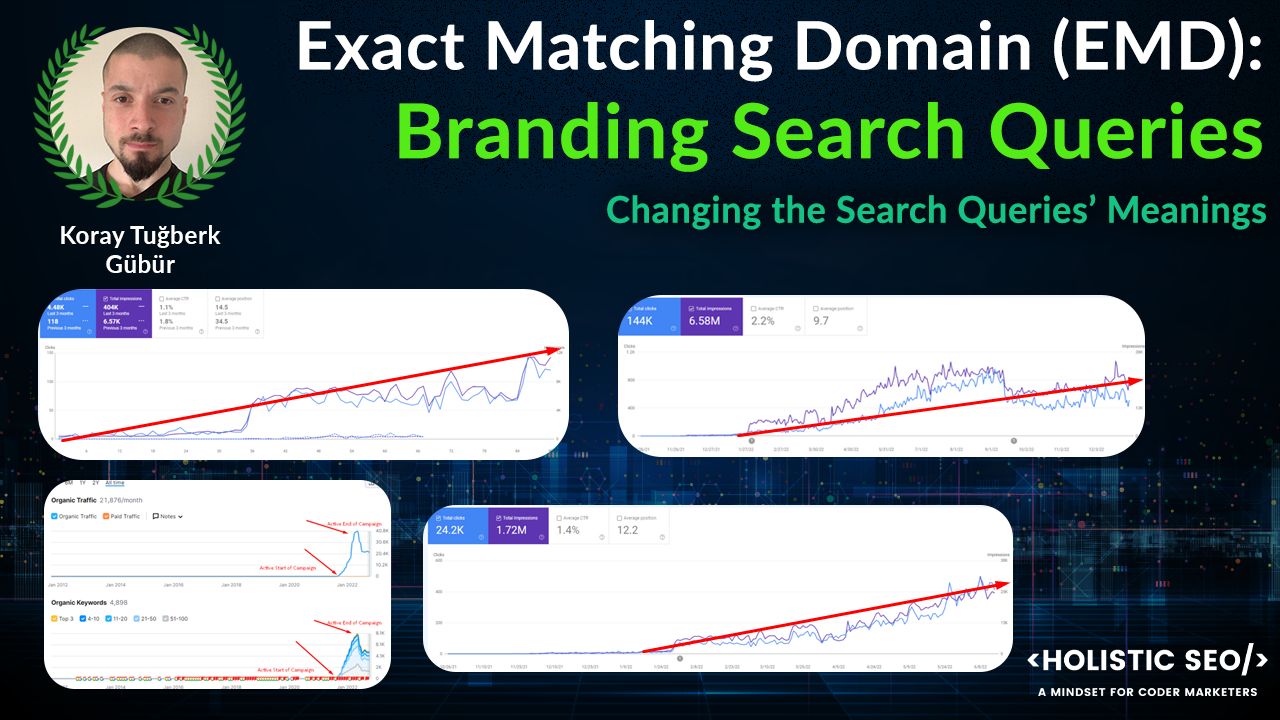
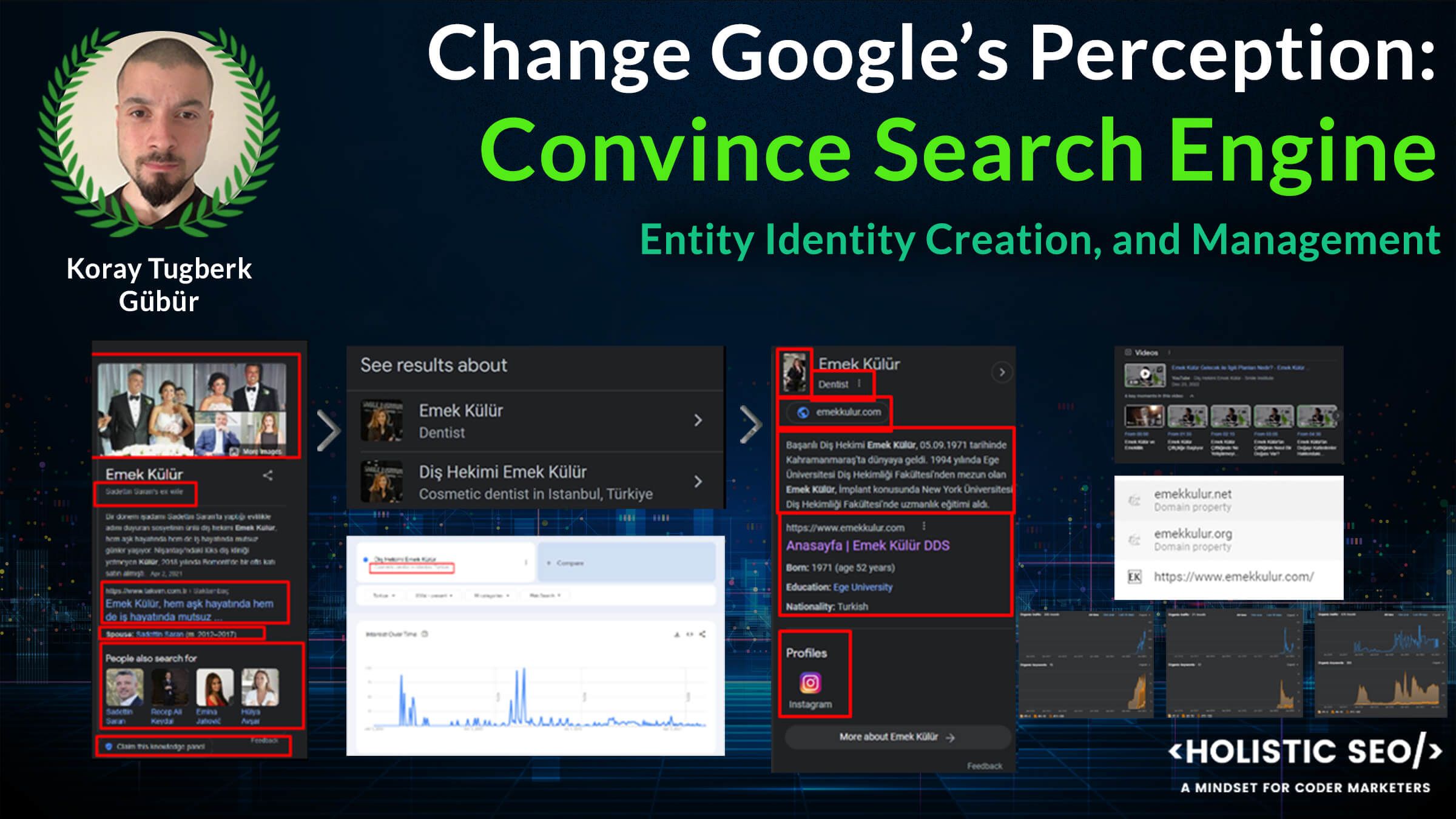

Comprehensive! This article shows why you need to know SEO even before you get a domain!
Thanks for the kind comment, and you are right.
Search engines evaluate the quality, correctness, and responsiveness of a document to a term using techniques from Information Retrieval and Extraction. Because they already contain valuable phrases in their domain name, exact match domains can rank higher in search results more quickly. It’s incredibly useful, and worthy of recognition as such. I’ve added your site to my bookmarks in the hopes of reading similar articles in the future.
Thank you, Samuel.
SO if domain extension affects then if I buy .best extension for my affiliate site will it help
Hello,
Thanks for your comment. The words that appear in the domain name, whether it is part of subdomain, or the domain extension, it carries a brand to topic, and query to website relevance. If you can manage to make your brand include the word “best”, and users show this signal, search engine will add a certain level of relevance boost for you.
This SEO research study on exact-matching domains provides valuable insights into the impact of using exact-match keywords in domain names. The author’s analysis and findings shed light on the current relevance of exact match domains in search engine rankings. The discussion around brand perception, user behaviour, and industry-specific considerations adds depth to the research. I appreciate the comprehensive approach and the inclusion of practical recommendations for choosing domain names. Thank you for conducting and sharing this informative SEO research study!
Thank you, Austin!
Exact matching domain names can have a significant impact on SEO. This research study delves deep into the benefits and pitfalls of using exact-match domains. It’s fascinating to see how search engines evaluate domain names and their relevance to search queries. Thanks for sharing this informative study on SEO and domain strategies!
Thank you, Denver!
Impressive! This article insights into completely EMDs, it highlights how incorporating local names into EMDs can enhance visibility in localized search queries, thereby strengthening a brand’s in specific regions. Overall it’s helpful guide for businessess looking to optimise their online presence & improve their visibility in search results.
Thank you, Dear!
What about partial match domain with all all topics of main kw covered.
I see partial match ranks also well in serp as compared to EMD.
It would be safer against certain Google constraints.
Hi, great article about exact match domains! Lets say you wanted to build an online shop with several topical maps around products you need to sleep like mattresses, mattress toppers, beds, slatted frame and so on… would you connect the most important entities in the domain like bed-mattress.com or would you go for a hypernym like sleep-shop.com (what would be a good hypernym)?
I have an EMD.
It started getting clicks with in the first month. Daily avg clicks were around 10-20.
But then suddenly, it dropped my main keyword in the US. while other keywords were ranking well.
Now, even it does not show my domain anywhere. Even with the exact Query without spaces.
What may be the reasons.
Is got penalty. Is it safe now work with emd.